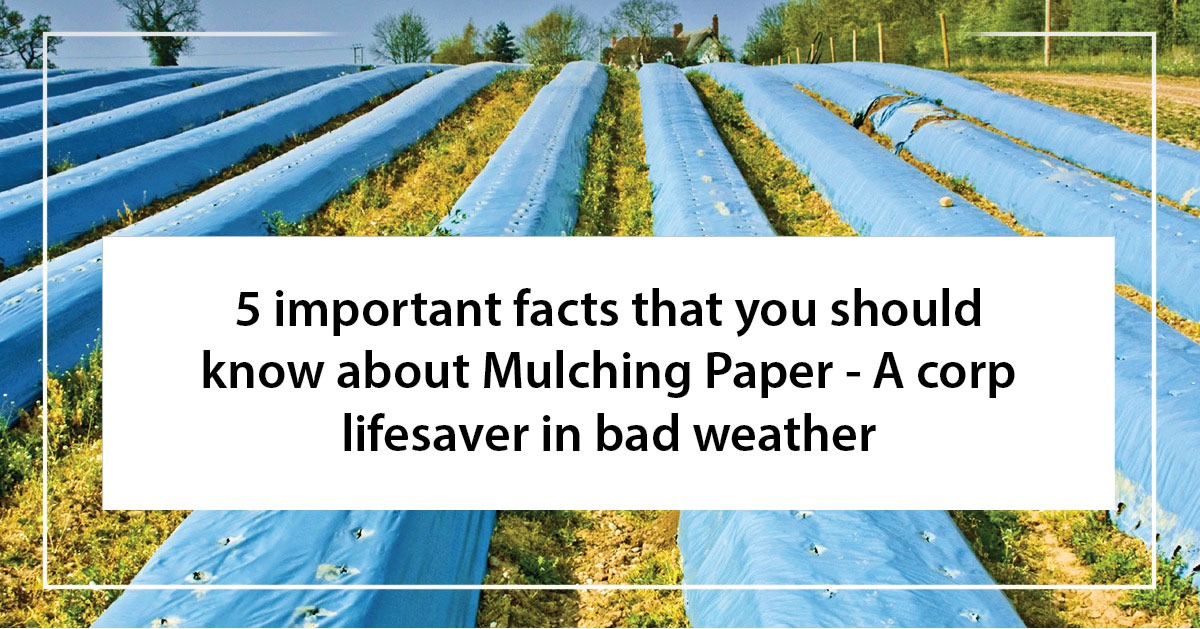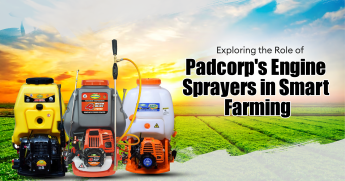Mulching is a process of covering the soil with a porous material to improve soil condition and plant growth. This process creates protective cover around plant root to make favourable for better condition.
Mulching has many benefits to crop production, few of the benefits of using the mulching sheet in crop production are as below :
1.Reduce weeds by reducing sunlight to the soil around the plant roots area.
2.Reducing water evaporation from the soil and hence reduce the watering requirement.
3.Control soil temperature and hence improve plant growth during different seasons.
4.Potentially improve soil pH level over the time
5.Reflecting light from mulching paper controls pests like aphids and thrips, leaf miner which may otherwise harm plant growth.
6.Avoid soil erosion during the rainy season.
5 Important Facts for Selecting Mulching Papers
Today there are many Mulching sheet manufacturers are available to farmers, however, selecting the right type & quality of mulching sheets are important for good quality of crop production.
1) Thickness :
In earlier days, thick mulching paper being used, however now much lesser thickness paper is sufficient. However selecting mulching paper thickness is important for durability & crop type. For vegetables, 15 microns to 30 microns is used, however for orchids crops, film thickness ranges from 100 microns to 150 microns found suitable. More thickness is more durability, so depend on crop type thickness of the mulching sheet to be used. Lower thickness / Thin mulching paper are cost-effective and suitable for short production crops like vegetables, but not durable.
2) Width :
Depend on the interspace between crop rows, mulching paper width need to be selected. This is also important for laying purpose. Generally, 1 to 1.5 meters of width film is used for a variety of crop productions.
3) Perforations:
This parameter is advantageous for some points and disadvantages for others, so selecting the right perforation paper is important. Water stagnation problems can be avoided with a higher perforation sheet, however, at the same time weed growth can be an issue. With lower perforation paper, better-controlled water and fertilizer distribution can be achieved.
4) Mulching paper colour: Mulching paper colour type is one of the most important parameters depend on the type of crop, soil, and location. Mulching paper colour affects soil temperature, air temperature around the plant, sunlight reflection & soil pH level. Clear transparent mulching sheets makes the soil warm. So they are mostly used in the colder areas or in winter season crops. Like for strawberry cultivation in the winter season.
Crop production problem like weed growth can be better controlled with black coloured paper, as it absorbs most of the sunlight and does not transfer to soil. Similarly, dual colour mulching paper designed to absorb a certain wavelength of light & reflect certain. This is advantageous for fruit and flower growth in colour or taste, overall quality of the crop. Yellow – Brown mulching paper is for controlling whitefly and it attracts them and supports killing them by reflecting light from the yellow side. Black and silver is the most popular type of mulching sheet as it is suitable for any crop. This mulch reflects almost 27% of the sunlight towards fruits and plant; so improves the colour of the fruit.
5) Quality of mulching paper: A good quality mulching paper should have long durability, should not be highly pores and have a good thermal resistant characteristic.
Conclusion
Mulching is useful for modern-day crop production and offers many benefits like fruit growth, roots growth, soil conditioning and pesticide controlling to the farmers. Selecting the right mulching sheet manufacturer is equally important to enjoy these benefits.
Padgilwar Corporation, Pune has over 60 years of experience in agriculture technology and has supported our farmer’s growth with knowledge and experience gained. They do manufacture and supply high-quality mulching sheets for crop production.



